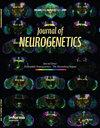The origins of the force-from-lipid principle and the founding member of the TRP channel superfamily.
IF 1.8
4区 医学
Q3 GENETICS & HEREDITY
引用次数: 0
Abstract
The 2021 Nobel Prize in Medicine and Physiology recognized the seminal work of David Julius, who established the temperature and pain sensory mechanisms based on the TRPV channel, and Ardem Patapoutian, who resolved the stretch activation mechanism for touch and proprietary sensation via Piezo channels. We are fortunate and proud to publish a special section on the force-from-lipid principle underlining Piezo channel activation and the origin of the first TRP channel, prepared by the pioneers who initiated the early work that led to the discoveries (Martinac & Kung, 2022; Minke & Pak, 2022). Professors Baruch Minke and William Pak recount the story of their early endeavor to reveal the phototransduction process mediated by the TRP channel in the fruit fly Drosophila. This light-sensitive TRP channel is now recognized as the founding member of the TRP channel superfamily, which encompasses a large category of channels underpinning different sensory mechanisms, including visual, auditory, thermal, and mechanosensory transduction. The functioning of Piezo channels turns out to be based on the same force-from-lipid principle, originating from lipid membrane lateral force without involving any cytoskeletal or cell adhesion molecules. As professors Ching Kung and Boris Martinac recount in their article, the initial finding actually originated from studies on a special strain of giant E. coli. Indeed, ‘what is true for E. coli is true for the elephant’.脂质力原理的起源和TRP通道超家族的创始成员。
本文章由计算机程序翻译,如有差异,请以英文原文为准。
求助全文
约1分钟内获得全文
求助全文
来源期刊

Journal of neurogenetics
医学-神经科学
CiteScore
4.40
自引率
0.00%
发文量
13
审稿时长
>12 weeks
期刊介绍:
The Journal is appropriate for papers on behavioral, biochemical, or cellular aspects of neural function, plasticity, aging or disease. In addition to analyses in the traditional genetic-model organisms, C. elegans, Drosophila, mouse and the zebrafish, the Journal encourages submission of neurogenetic investigations performed in organisms not easily amenable to experimental genetics. Such investigations might, for instance, describe behavioral differences deriving from genetic variation within a species, or report human disease studies that provide exceptional insights into biological mechanisms
 求助内容:
求助内容: 应助结果提醒方式:
应助结果提醒方式:


